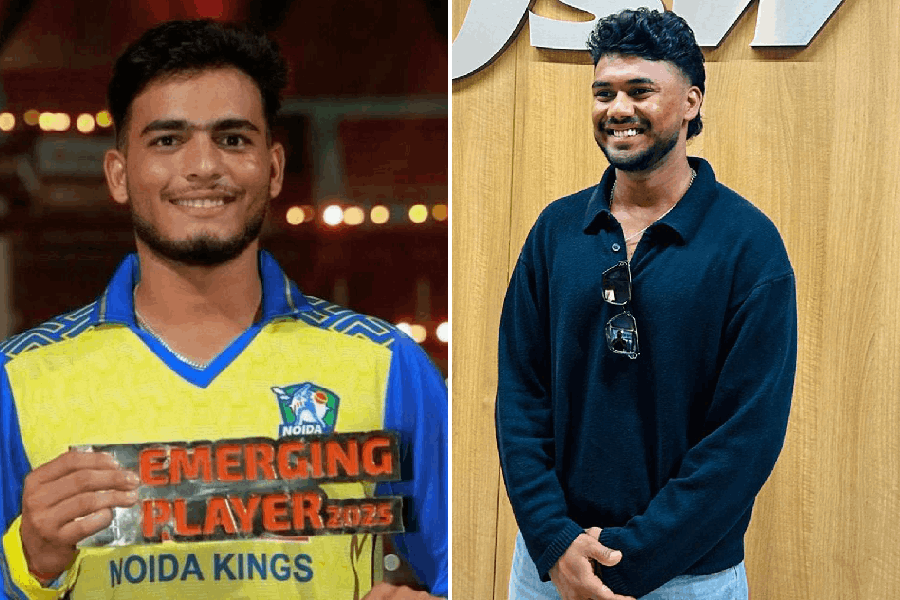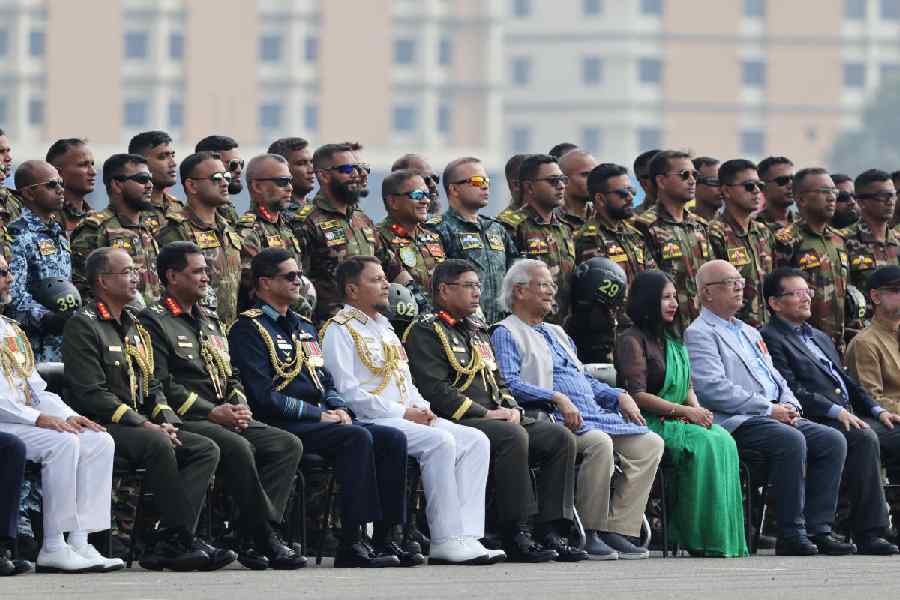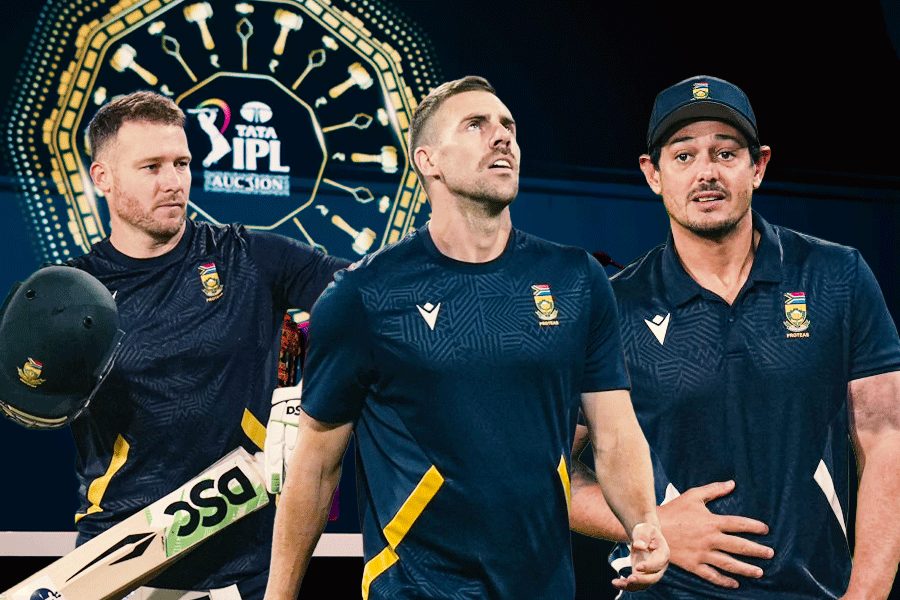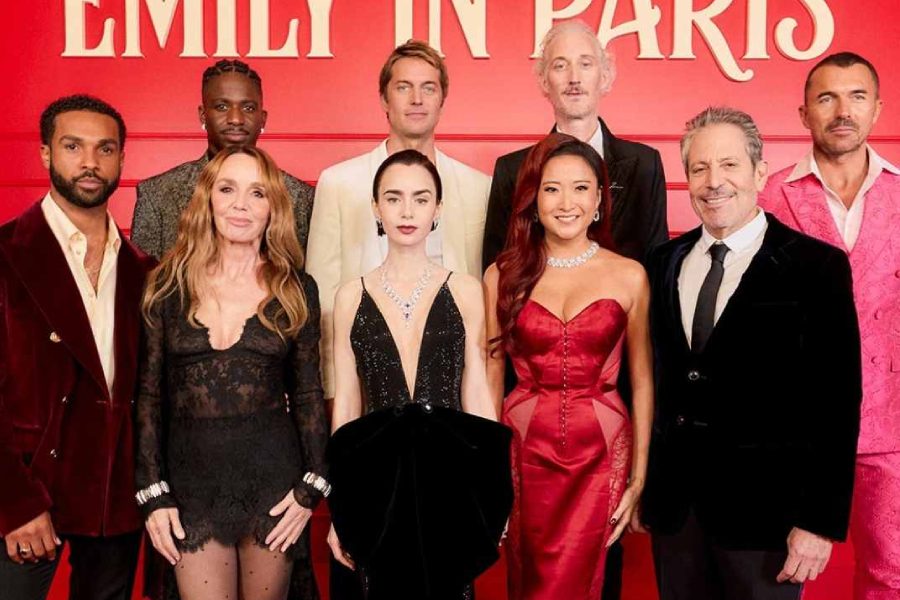 Wednesday, 17 December 2025
Wednesday, 17 December 2025
 Wednesday, 17 December 2025
Wednesday, 17 December 2025
It was my fifth birthday. A sunny afternoon, a flurry of gifts, and a friend named Raja handing me a pencil box that looked flashy enough already. But it held a surprise.
Nestled inside was a box of wrestling trump cards that would change everything. The yellow bandana, the handlebar moustache, and the ripped red-and-yellow shirt, were symbols which would define not just my childhood, but an entire generation's dreams.
Raja had no idea that the box of wrestling trump cards tucked inside would open a gateway to a universe of larger-than-life heroes. As I went through each card, I discovered a new world of masculine, beast-like beings (I didn't consider them human back in those days).
Although each card detailed their key attributes in quantifiable format, their strengths could be easily anticipated from their printed pictures alone, which served as lessons in human muscle anatomy.
All of them were spectacular, but one card drew my attention — a persona that embodied the all-American hero, larger than life, loud, and wildly charismatic. He became an instant favourite.
But until then, it was just an image fuelled by my imagination. One fine afternoon, when my dad and I sat in front of our newly-bought colour TV to watch a Test match between India and Pakistan, the game stopped due to rain. The broadcasters, searching for content, decided to showcase an episode of WWE Raw.
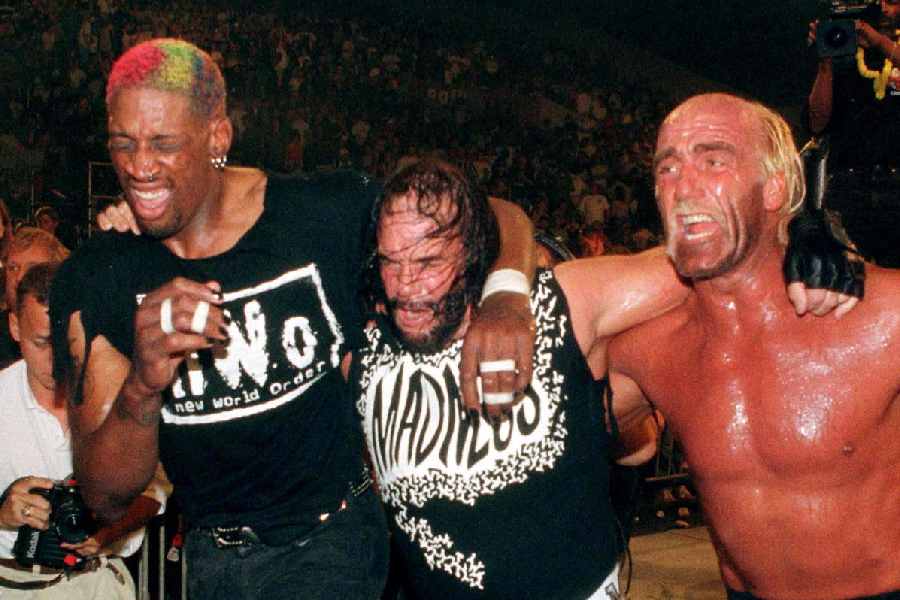
It was the first WWE fight I had ever seen, and there he was— the charismatic hero taking on another mighty fighter. As the match progressed, I watched him crush his opponent with pride, his in-ring style focused on power moves and crowd drama rather than technical finesse. From that day, I was a devoted fan of Hulk Hogan.
It was Hogan who wove the interest of watching fights into countless 90s kids like me, who were sitting thousands of kilometres away. When I tried to boast about watching WWE to my friends, or attempted to mimic the fighting styles of my favourite wrestlers, I discovered that most of them knew far more than I did.
Most had common favourites: The Undertaker, Kane, and Big Show. But I remained the torch-bearer of Hogan. But I wasn't the one who tried to bring Hogan's moves into our world. That was Vikash, one of my childhood buddies. While his attempts at recreating Hogan's signature moves surely caused multiple guardian calls and scoldings from teachers, it brought him immense respect from me and created a bond between us that remains to this day.
Hogan revolutionised an entire industry. When he signed with the World Wrestling Federation in 1983, professional wrestling was largely a regional spectacle. By the time "Hulkamania" reached its peak in the mid-1980s, it had become a global phenomenon. His theatrical flair helped transform wrestling from a niche entertainment into mainstream popular culture.
The numbers tell only part of the story.
Six WWE championships, eight WrestleMania main events, and a 2005 induction into the WWE Hall of Fame. But statistics fail to capture the cultural earthquake that Hogan triggered.
He headlined the first WrestleMania in 1985, standing shoulder-to-shoulder with Mr. T and legitimising wrestling as must-see entertainment across America and beyond.
His influence extended far beyond the ring. The 1985 CBS cartoon series "Hulk Hogan's Rock 'n' Wrestling" brought his larger-than-life persona into Saturday morning television.
Films like "Rocky III," "No Holds Barred," and "Suburban Commando" cemented his status as a crossover star. Even a memorable 1996 Baywatch appearance proved that the Hulkster's appeal transcended traditional wrestling audiences.
For children of the 1990s, Hogan represented the triumph of good over evil, wrapped in an accessible, almost cartoonish package. His pre-match rituals such as cupping his ear to the crowd, flexing for the cameras, delivering impassioned speeches about training, prayers, and vitamins became sacred ceremonies that children worldwide mimicked.
In schoolyards across the globe, playground politics often divided along wrestling allegiances. While many of my friends gravitated toward the darker mystique of The Undertaker, the supernatural power of Kane, or the imposing presence of Big Show, I remained steadfast in my devotion to Hogan.
Hogan's influence on 1990s children extended far beyond entertainment. In an era before social media, before the internet democratised celebrity access, wrestlers like Hogan represented accessible heroes.
They appeared on our television screens weekly. Unlike movie stars who disappeared between films, wrestlers were a constant presence in our lives. The trading cards that introduced me to Hogan were more than collectibles. They were tangible connections to a world of possibility. Each card featured detailed statistics that children studied like biblical scripture, memorising heights, weights, finishing moves, and career highlights.
They were educational tools that taught young fans about competition, perseverance, and the power of character. Hogan's "Hulkamania" catchphrases became part of the childhood lexicon. "What you gonna do when Hulkamania runs wild on you?" echoed through schoolyards, while his signature poses were recreated in school talent shows.
The red-and-yellow colour scheme became visual shorthand for childhood heroism. Hogan's later years were marked by controversy and health struggles that complicated his legacy. Scandals led to his temporary removal from the WWE Hall of Fame in 2015, though he was reinstated three years later. His outspoken support for Donald Trump divided fans who remembered him as a childhood hero, not a politician.
The physical toll of decades in the ring became apparent. In recent interviews, Hogan spoke about his numerous surgeries: "25 surgeries in the last 10 years," including multiple back operations and joint replacements. The superhuman figure was human.
Yet for those of us, who grew up during wrestling's golden age, the Hogan who mattered most wasn't the aging man struggling with health issues and personal controversies—it was the mythical figure who gave us the concept of heroes. In losing Hulk Hogan, many have lost a fundamental piece of childhood mythology, a bridge to simpler times when heroes and villains were defined, when good always triumphed, and when believing in something larger than ourselves felt natural and uncomplicated.
For the children of the 1990s, now adults navigating an increasingly complex world, Hogan's passing marks another milestone in the inevitable journey away from childhood wonder. The trading cards may be lost, the VHS tapes may be obsolete, and the wrestling rings may be filled with new heroes, but the impact remains.
Terry Gene Bollea became Hulk Hogan and, in doing so, became a permanent resident in millions of childhood memories as he passed. The Hulkster may be gone, but Hulkamania, in all its pure, nostalgic glory, will run wild in our hearts forever.
